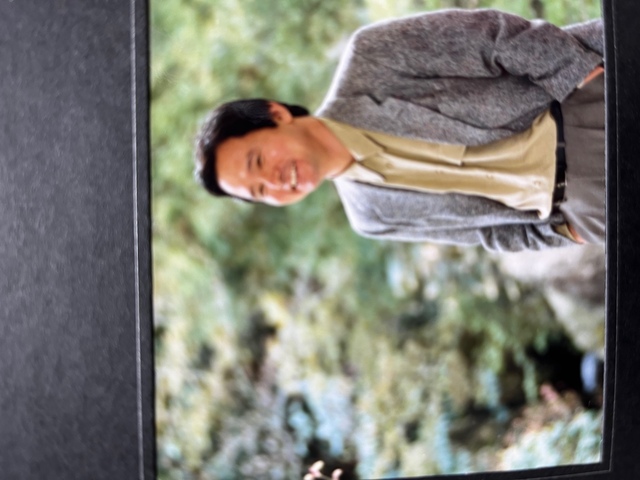October 4, 2018
I was surprised to see a poster advertising the weekly magazine Shinchō hanging in the subway yesterday.
"Oh no, another week has gone by already?"
I immediately bought a copy and read it at Starbucks, and this week's issue also proves beyond doubt that Takayama Masayuki is the only journalist in the post-war world.
The following is from his famous "Henken Jizai" column that concludes the issue.
The emphasis in the text other than the headings is mine.
It's under the old name.
After the execution of the cult leader, Shoko Asahara, an ex-Asahi Shimbun reporter who is now living in retirement, wrote a column reminiscent of a memoir under the heading "The Darkness of the Outbreak: Are We Unrelated?
In it, he ponders the disciples who "worshipped their arrogant leader as a god and were executed along with him after being accused of their crimes for playing the role of his vanguard."
The disciples "stopped thinking at all and believed that the instructions of their god were absolute, and they stopped questioning them, too, in that cramped group that was like a pre-war militaristic nation."
It's like the soul of a triplet, or perhaps it's like a curse, but even after they quit being journalists, they still talk about the dark history of the pre-war period.
It's a sad state of affairs, but the article continues to discuss the roughness of the disciples' hearts, using three sets of adjectival phrases to describe it: "the mental devastation of trying to force down those who don't agree with them by force, the regression of democracy, the fading of memories of war..."
His writing made me feel like I had seen it before.
When I looked again at the name of the reporter who wrote it, I saw it was "Kenichi Furuhata."
Yes, about 30 years ago, there was a time when the Asahi Shimbun loved to lecture stupid Japanese people.
It was similar to the Sermon on the Mount, but unlike Jesus, there was no truth at all in what he said.
The Japanese army killed 300,000 people in Nanjing. Not a single piece of bone has been found, but they say we should face up to our brutality.
There is also the "Iriomote coral" fable.
A photographer from Asahi News found the graffiti "KY" written on the world's most significant and most valuable thistle coral.
Japan's seas and mountains are now overflowing with tourists from China and Korea.
The Zao Juhyo (frost-covered trees) and the bamboo groves of Kyoto's Sagano are covered in unsightly graffiti in Hangul and simplified Chinese characters.
However, when graffiti was found on the coral, Asahi did not hesitate to conclude that the culprit was a Japanese person.
It was because Honda Yoshiro, the photographer who carved it, pretended to be the person who had discovered it.
On top of this, a lecture for the Japanese people was included with the photograph.
"The Japanese people may be the world's foremost nation when it comes to graffiti," a people with a spirit so impoverished and a heart so sordid that they have no shame in instantly damaging something that has taken a hundred years to nurture...' It was a three-part tirade of contempt.
The article shows the author's habits.
It's like a fingerprint.
Furuhata was identified as the author, but this malicious false report only resulted in the dismissal of the photographer, Honda, and the company president, Hitotsuyanagi Toichiro.
Furuhata insulted the Japanese people with false information, but he ran away without apologizing.
Before showing off his three-part writing style with a smug air, he should have apologized first.
Then, another liar-OB appeared to chase him.
It was Keiji Takeuchi who was appointed as an anti-nuclear power activist.
After 3/11, he wrote that "the gas release valve for the nuclear reactor was not installed in Japan because there was no risk of a nuclear meltdown. This valve, introduced under pressure from overseas, is our lifeline."
He writes that the reactor was made in Japan but was made by the US company GE.
The argument that "the release valve is not necessary" was made by GE, and the Japanese side installed it later.
Takeuchi worships white people, and he disregarded the responsibility of the white company GE, and he pushed all the responsibility onto TEPCO.
This man took away the plutonium (Pu) that Japan had been storing.
He asked why Japan had 47 tons of nuclear weapons material.
He even suggests that Japan should pay to have someone else take it away.
Japan has faced national crises on numerous occasions due to energy shortages.
As a result, it has established a nuclear fuel cycle using plutonium and has been working to ensure a stable energy supply.
Asahi is not happy about this.
It has instilled a nuclear allergy in the Japanese people, and is even trying to shut down nuclear power plants.
It argues that it is unacceptable for Japan to possess such a large amount of nuclear weapons material, but Takeuchi also writes lies here.
The plutonium we have on hand is from spent fuel from light water reactors, and most of it does not undergo nuclear fission.
The fact is that it cannot be used to make nuclear weapons.
If you want to make nuclear weapons, you have to burn them in a graphite-moderated reactor, not a light water reactor, as North Korea is doing.
While still working, his company motto was "Write lies."
If he has not been able to shake off this habit even after becoming an ex-employee, it is truly a sad state of affairs.



















